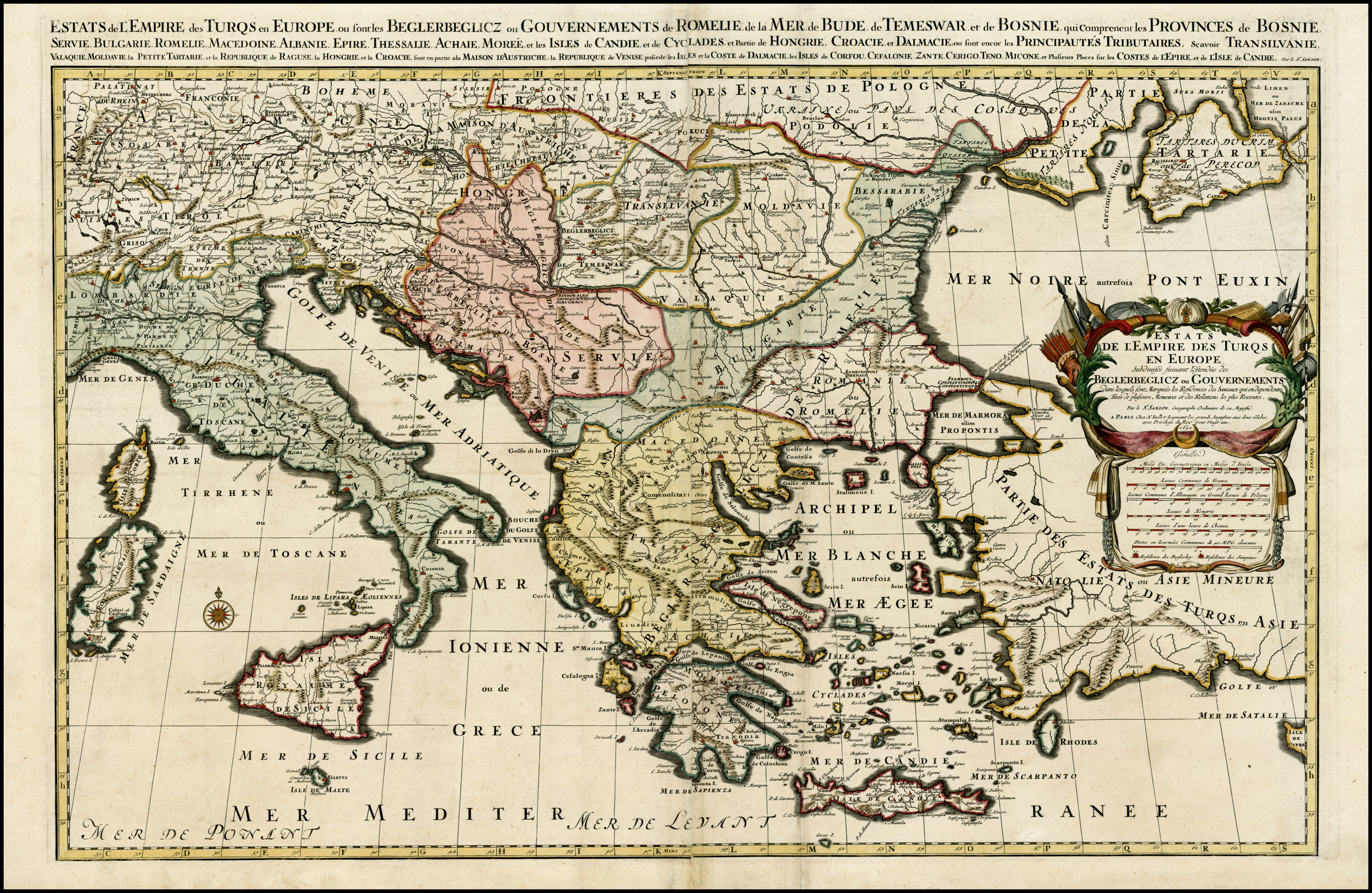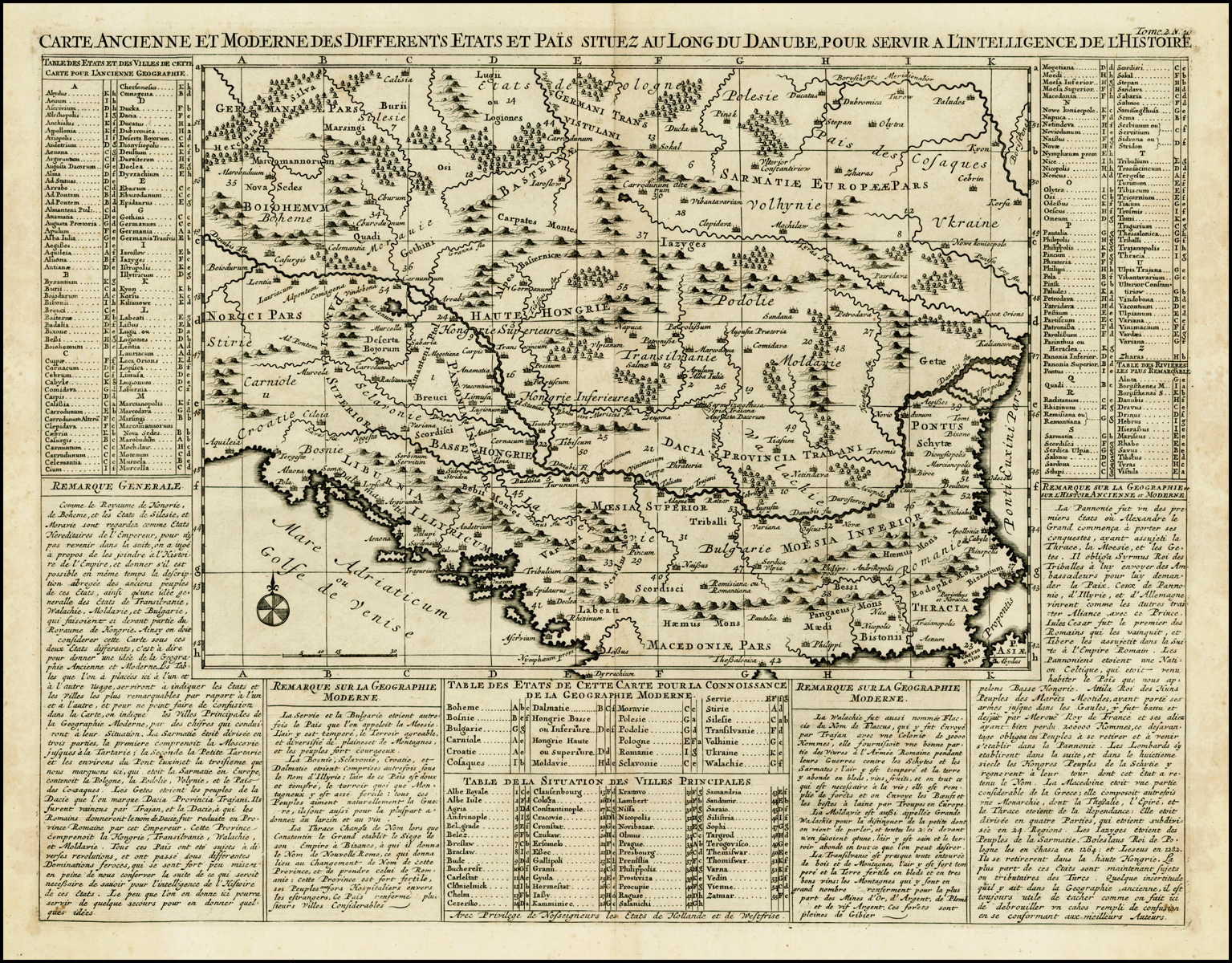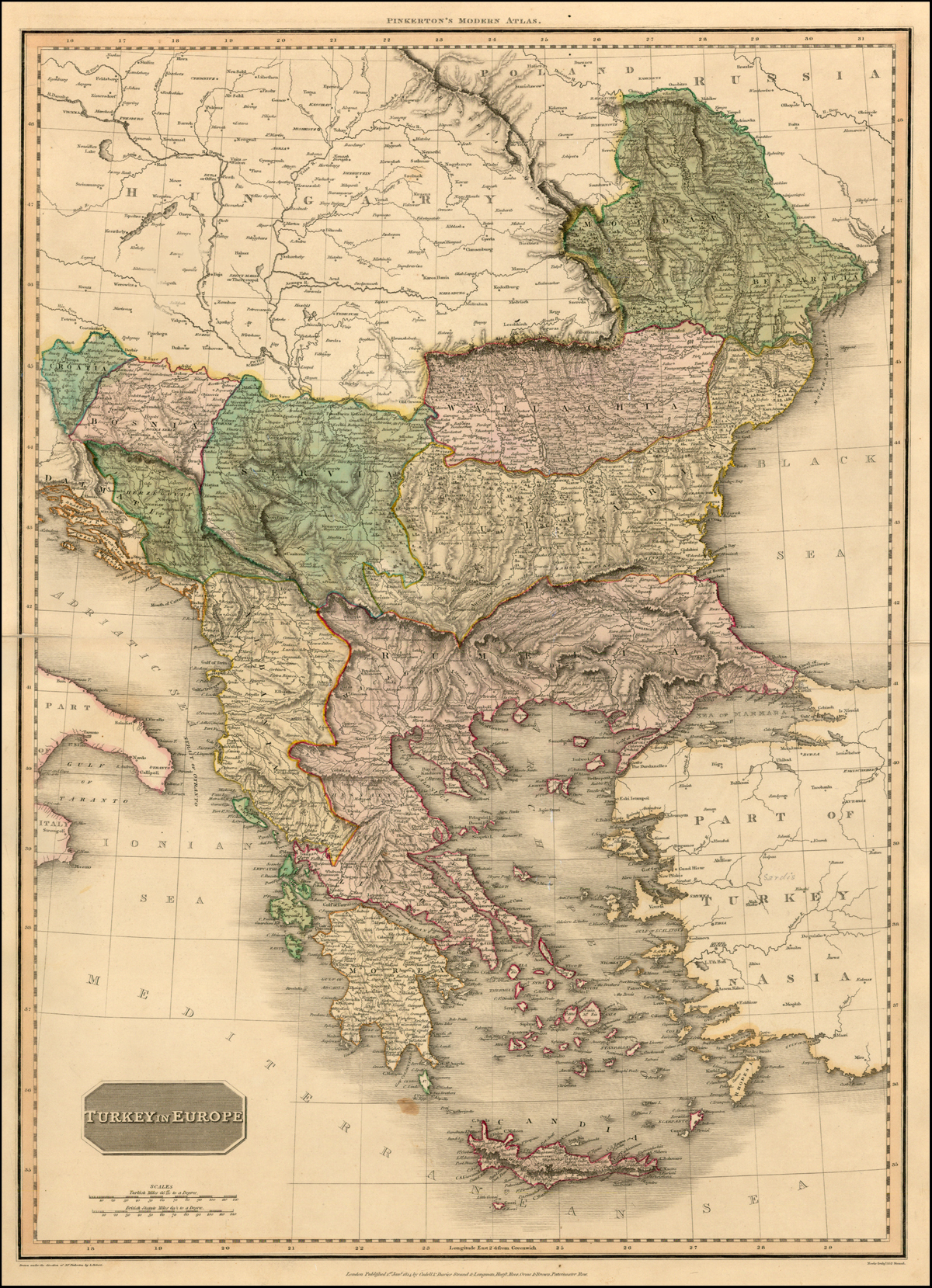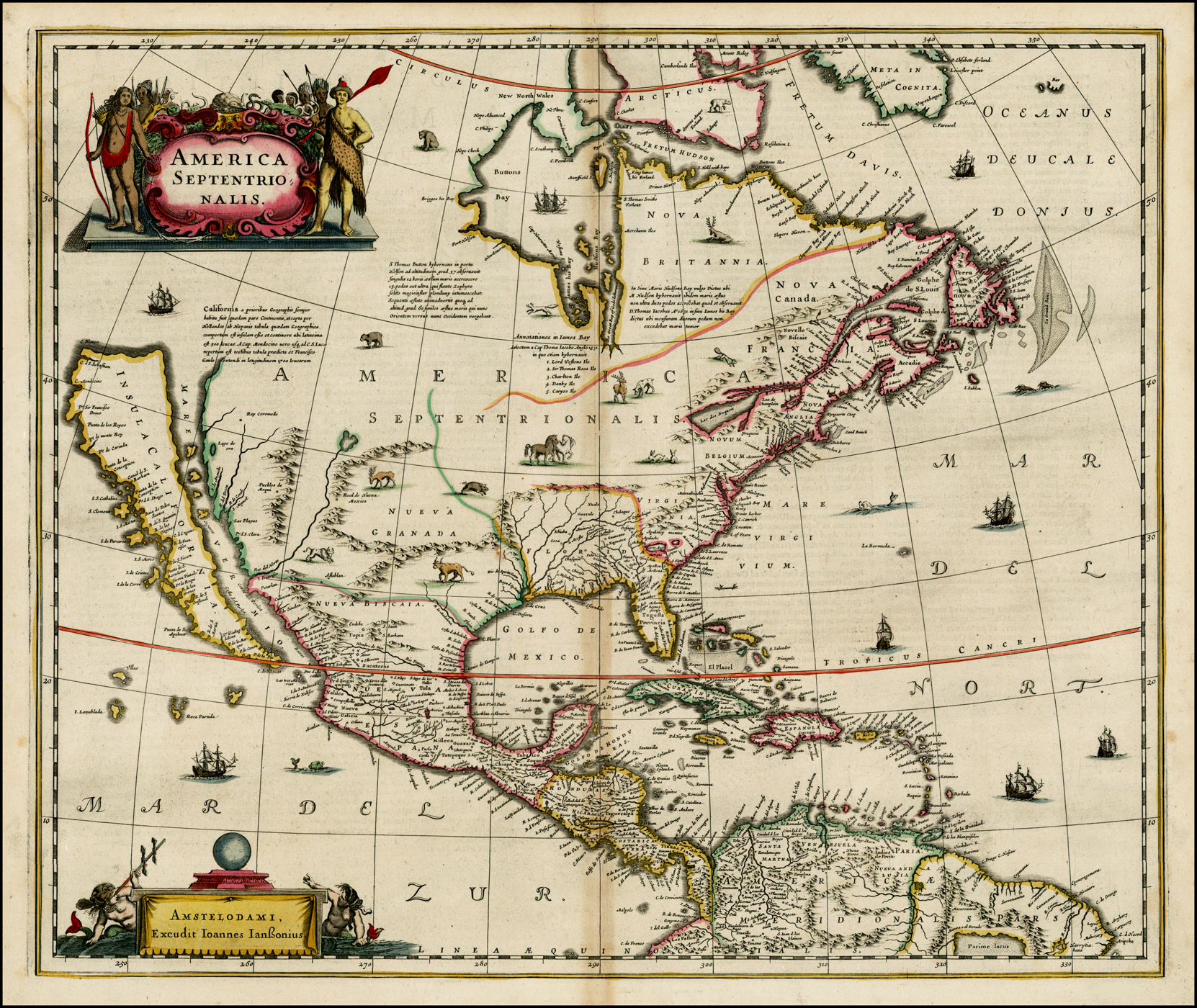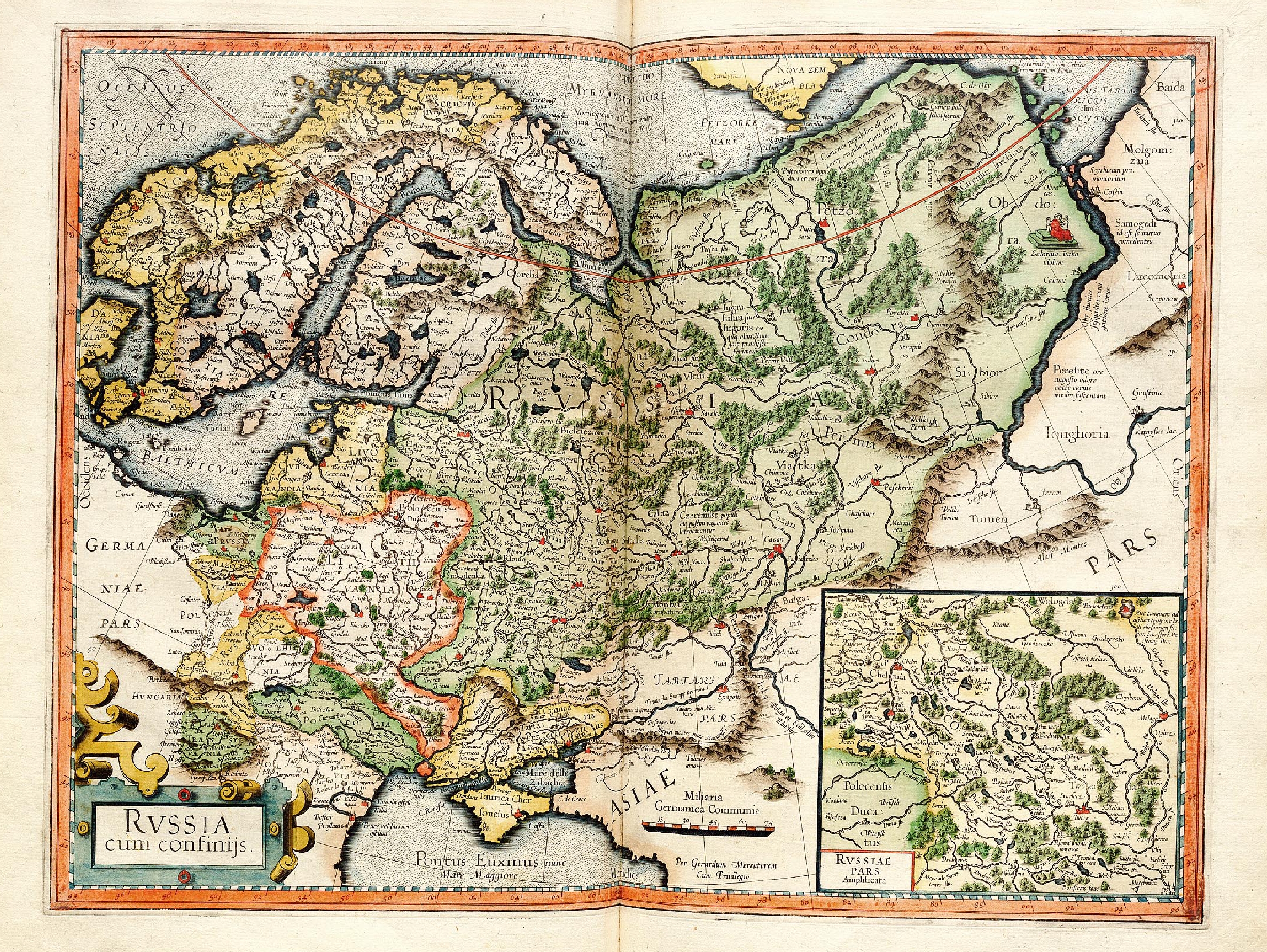Hubert Jaillot: Estats de L'Empire des Turqs en Europe, ou sont les Beglerbeglicz our Gouvernements
Estats de L'Empire des Turqs en Europe, ou sont les Beglerbeglicz our Gouvernements . . .
Hubert Jaillot
Amsterdam / 1692
Hand Colored
Size: 34 x 22 inches
Scarce large format map of the Turkish Empire in Europe and the Eastern Mediterranean, published by Jaillot, based upon the earlier maps of Nicolas Sanson.
